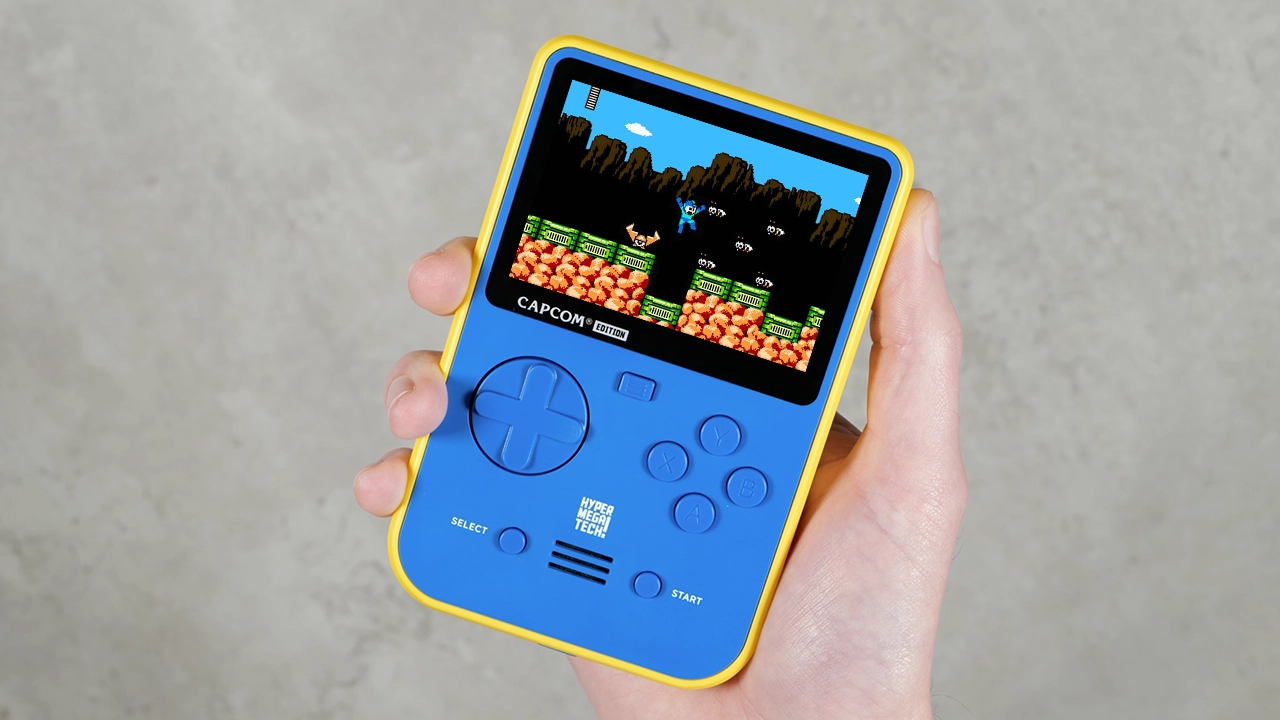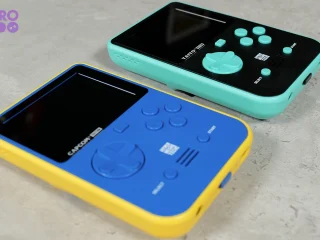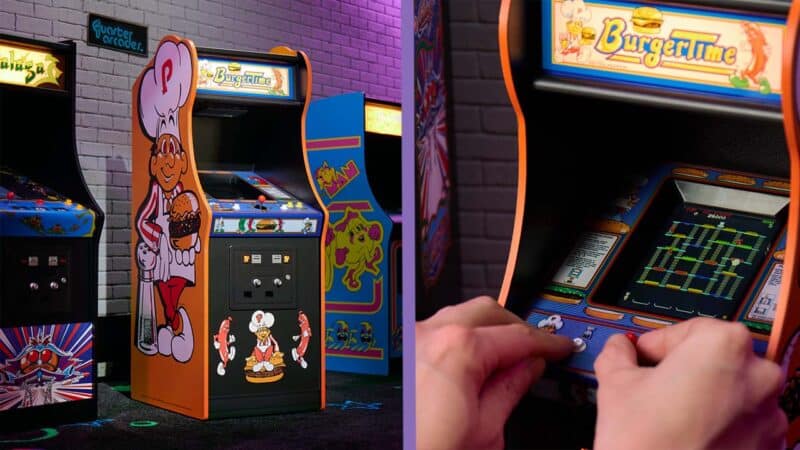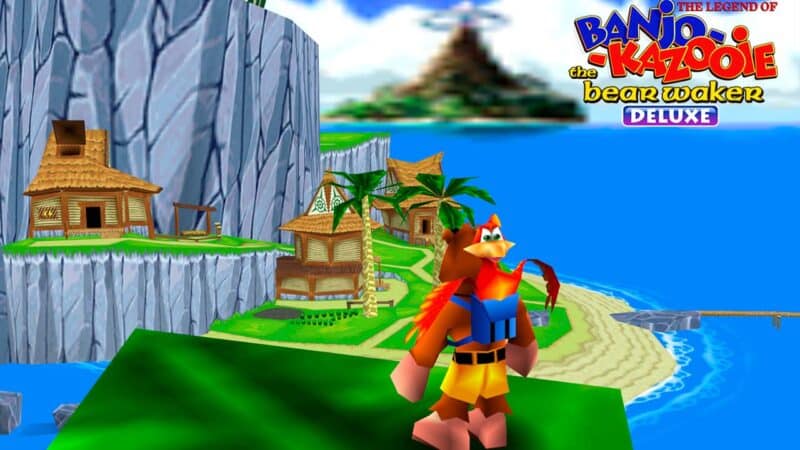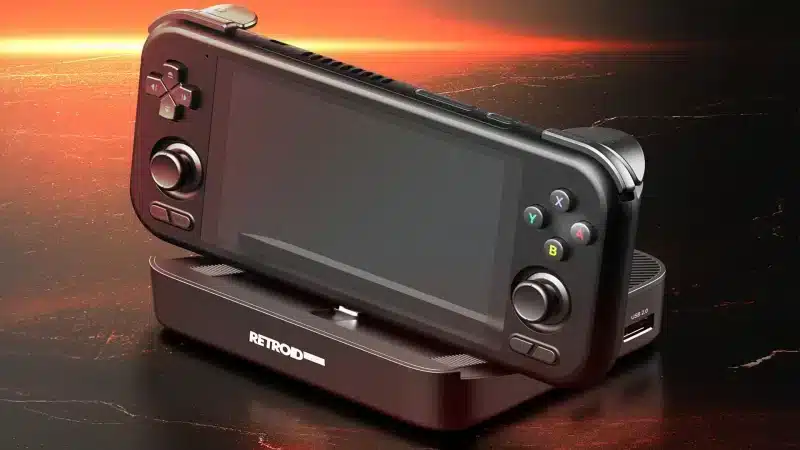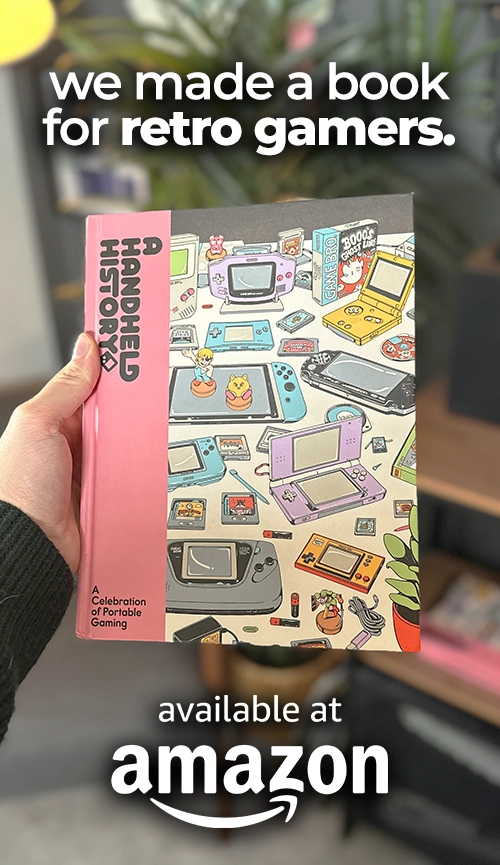If you’re looking for a simple, no-nonsense handheld for playing retro games on the go, then the Super Pocket could be the next product that you shove to the top of your wish list.
There are so many handheld emulation devices on the market right now, some of which are fairly powerful and able to play games up to the best PS2 games and others having unique form factors which make them appealing simply for having a interesting design.
The thing is though is that many of these handheld emulators lack the element of simplicity. Even if a device comes with an SD card pre-loaded with games, it might not have the exact things you want to play and you might have a difficult time getting certain games to run in the first place.
Well, attempting to solve this accessibility problem is the Super Pocket. It’s a handheld which was created by Hyper Mega Tech, whose parent company happens to be Blaze Entertainment who created the Evercade line of consoles.
This gives these devices a good amount of credibility considering that Evercade are doing some impressive stuff in the retro gaming and indie gaming scenes, so let’s take a closer look at these Super Pocket devices and see if they’re worth buying.
Table of Contents
First Look At The Super Pocket
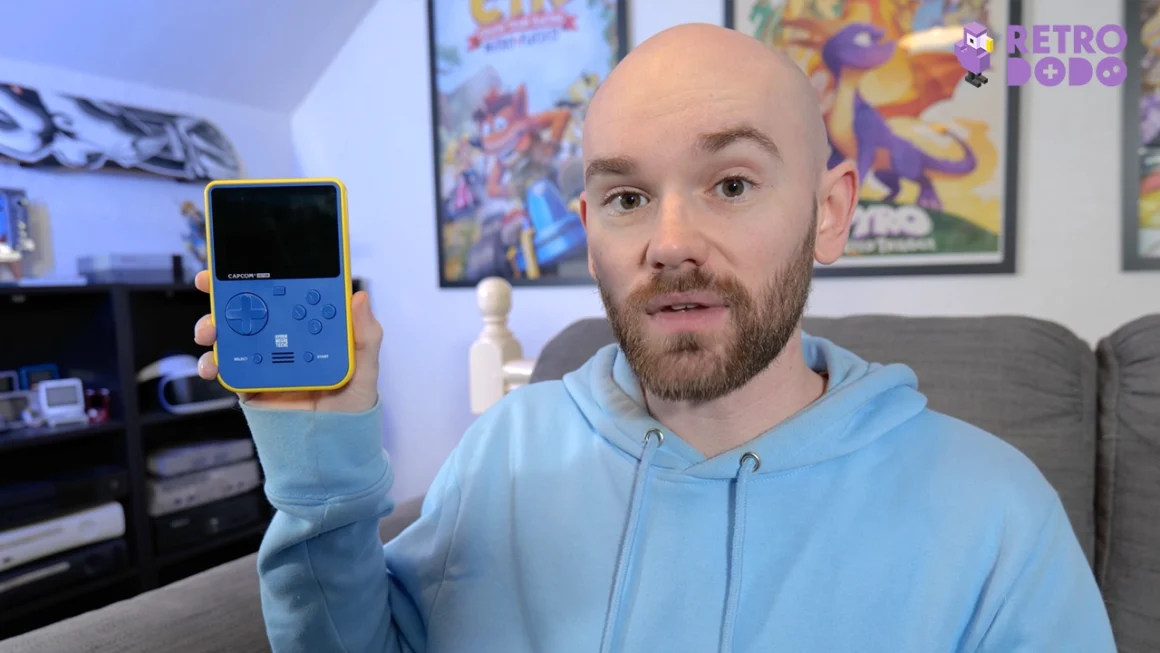
First of all I want to say a big thanks to Blaze Entertainment for sending us these Super Pocket units for review. They don’t release publicly until November 14th, so we’ve got hands on with these pretty early.
But what exactly is the Super Pocket and why do I have two of them?
Well, they’re a line of handheld systems which each come with a selection of pre-loaded games. The first run of systems feature two devices; a Taito device having 17 pre-installed games and a Capcom device with 12 pre-installed games.
As well as featuring different game selections, they also look distinct too, with both versions having a different colour scheme which not only makes it easy to differentiate them but also adds in a collectible element.
I can imagine that if they do more of these in the future, you could get a whole bunch of them and they would look awesome on display. It kinda reminds me of all the different versions of the Game Boy Color.
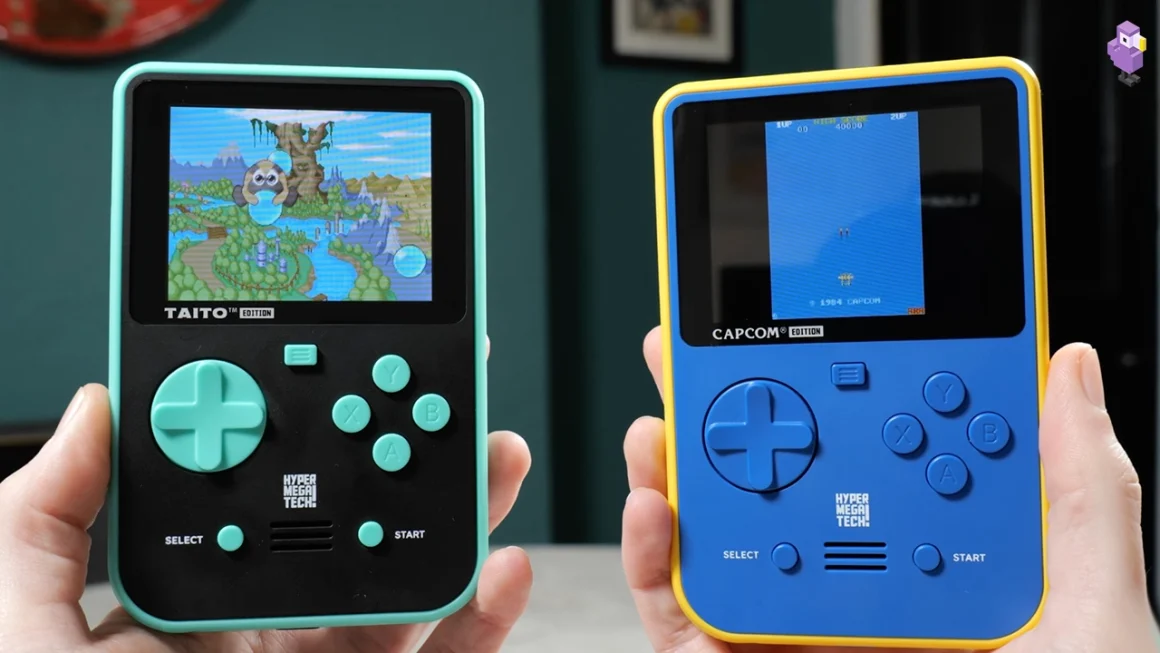
Other than that, they’re identical. The inputs are all the same, the screen is the same, and all of the internals are the same too. It’s just the outer shell and the pre-installed games which make them distinct from each other, so it’s not like you’re going to be in a situation where one is outright better than the other.
Which device you prefer is going to be entirely subjective, are you more of a fan of Taito games like Bubble Bobble or do you want to play some Capcom classics like Mega Man? The choice is yours!
Cost & Build Quality
First impressions of the devices were actually really good. These are retailing for £50 in the UK and $60 in the US, and this initially made me assume that maybe the build quality wasn’t going to be that great and maybe they’d cut corners and the screen would be poor or something, but I’m actually pretty surprised by the quality on offer here.
In terms of the layout of the system, I’m a big fan.
It’s clearly inspired by the Game Boy, having a vertical orientation, d-pad on the left, four action buttons on the right, start and select on the bottom and a menu button in the centre at the top.
On the back of the device you’ve got your volume control on the top left, a cartridge slot on the very top (which we’ll get into later) and four shoulder buttons in the middle which your fingers will rest on while using it.
Finally, on the very bottom we’ve got a headphone jack, the on/off switch and a USB port for charging. It’s all quite minimal and sleek looking and because it’s quite small it’s also easy to fit in your pocket and there’s nothing sticking out to snag on anything.
How It Feels In Your Hands
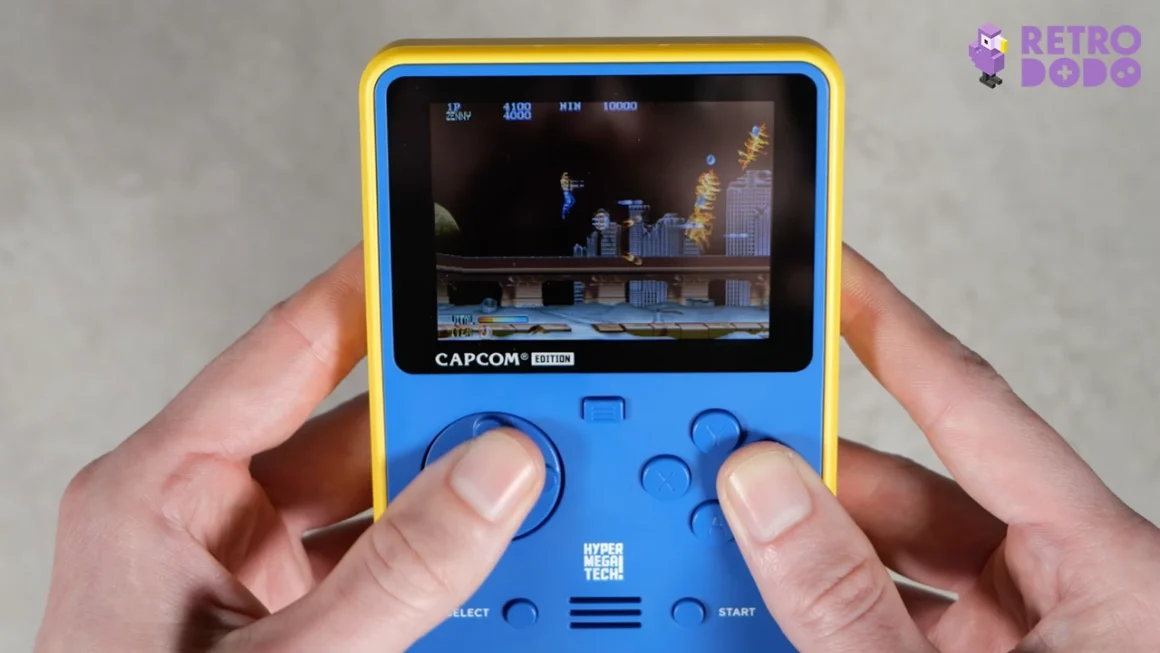
They’re a little bit heavier than I expected too which instantly makes them feel premium and sturdy in the hand. The buttons are all very high quality with the action buttons having a soft clicky effect to them and the start, select, menu, volume, shoulder and trigger buttons all having a slight bit more resistance to them which is great for stopping them being pressed by accident.
The main thing I was worried about though was this slightly odd looking d-pad.
It’s similar to an Xbox 360 D-pad in the way that it’s on a circular base, but unlike with the Xbox 360 it’s not too loose and you won’t accidentally hit other directions when you’re just trying to move to the right.
With the Super Pocket, the d-pad sort of feels like it very subtly snaps into set positions to give you a greater degree of accuracy and I ended up quite liking it. Would I prefer a Nintendo or PlayStation style D-pad?
Probably, but what we’ve got here isn’t bad by any means.
One Thing That Triggered Us…
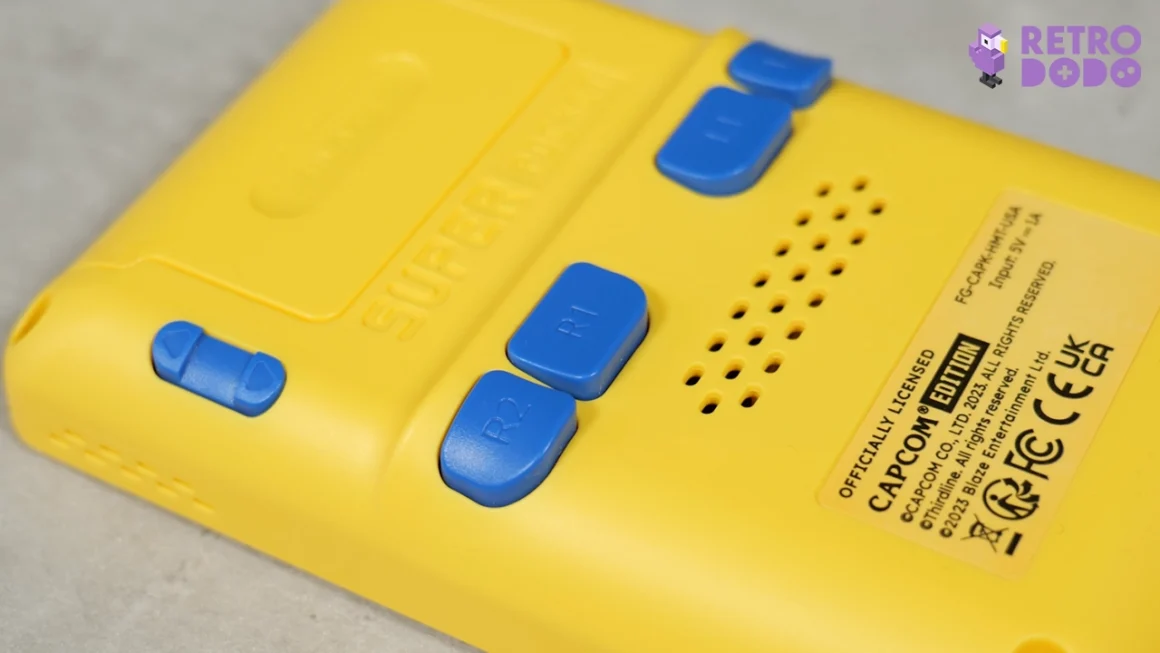
The one slightly annoying thing with the design of this is the way that the shoulder and trigger buttons are in-line rather than being stacked which ends up making it feel a bit unnatural to press the L2 and R2 buttons.
When you hold the device, your fingers will naturally be resting on the back buttons. Pressing L1 and R1 is fine because they’re placed towards the middle of the device where your finger tips rest.
L2 and R2 are on the outside though and I feel like I instinctively try to use the joint of my finger to press these while keeping the tips of my fingers on L1 and R1 to maintain a good grip on the device, but this just feels a bit awkward to me.
The thing is though, this never once was a problem at all during my testing because not a single one of the games on either of these systems actually use the back buttons. So the obvious question you’ll probably have, is why are they even there?
The Gift That Keeps On Giving
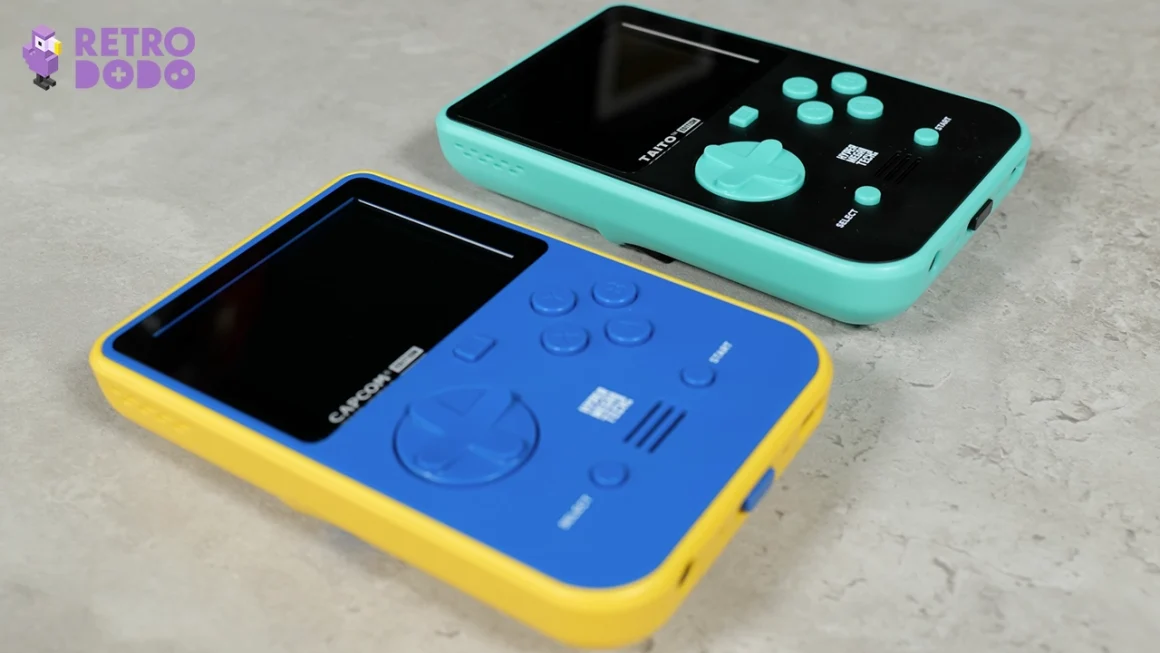
Well the first answer is that these could be here for future Super Pockets which might feature games requiring additional inputs, but the second and more important reason for these back buttons existing is that unlike with other devices like this where you’re limited to the pre-installed games, you can actually expand the games available on the device because it’s compatible with Evercade cartridges.
This is pretty incredible because it dramatically extends the amount of time you can spend playing with the device but it also has several other massive bonuses too.
First of all, unlike with downloading ROM files onto an alternative device which is a bit of a legal and moral grey area, you’re accessing official versions of the games and supporting the original publishers and developers of these titles.
Secondly, you’re actually getting a physical cartridge which just feels so much more satisfying than downloading digital games and the final positive of this is that you’re buying cartridges which are compatible with the other Evercade systems, so if you ever decided to get the Evercade EXP or VS systems, you would already have a collection of games to dive into.
Maybe you even already have some Evercade cartridges and if you do, you’ve already got a massive game library to jump into with the Super Pocket!
It’s all well and good having this expandable game library as well as the ones that come pre-installed, but the question is, what is it actually like to play on the Super Pocket?
What Is The Super Pocket Like To Play?
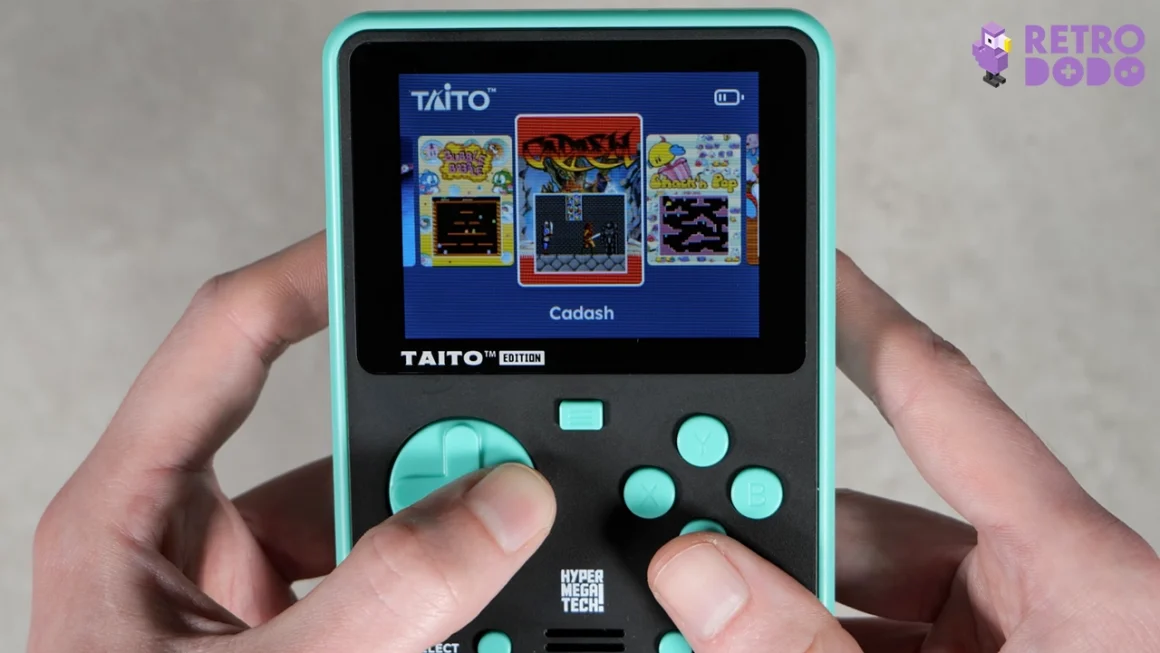
The Super Pocket has some really impressive elements.
First off the screen is incredible, especially considering the price of the device. The 2.8 inch IPS display has incredible viewing angles and the colours of these games are extremely vibrant.
The resolution is only 320 x 240, but because the screen is quite small and these games didn’t have the highest resolutions to begin with, this doesn’t matter at all.
Another surprising detail is that the sound quality is actually really good here. It’s only a single speaker in the middle of the device, but you’ve got a good amount of audio clarity.
It can go fairly loud and it always sounds very crisp and it’s not too tinny sounding either. Don’t forget too that it features that headphone jack if you want to get even more immersed into your game.
Emulation Quality
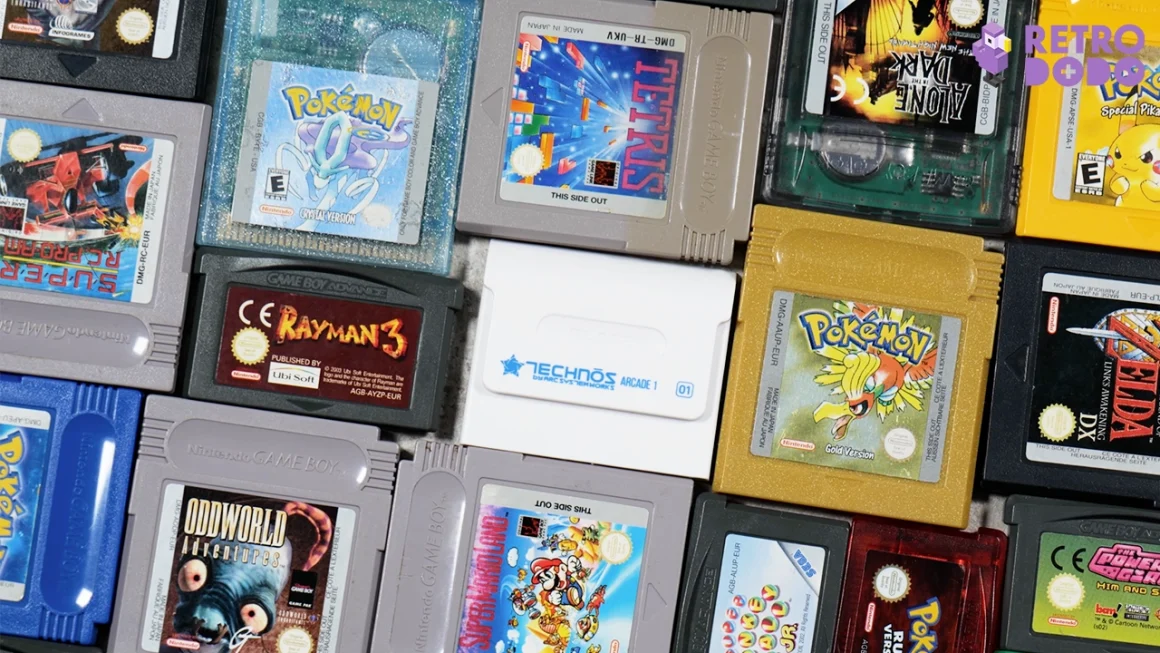
As you would expect with an officially licensed product like this, the quality of the emulation on offer here is as close to perfection as you can get.
I experienced a single problem where a game crashed on the title screen, but I was able to go to the menu, quit out and then restart and it was back to working flawlessly.
Obviously, none of these games would be particularly demanding so it’s probably not pushing the hardware very much at all, but I’m still happy to see everything working smoothly and I’ve got no complaints in this area.
As far as any extra features go, things are kept fairly minimal. You can access basic emulation options from a menu with things like save states and rudimentary display options like adding scan lines or swapping to pixel perfect or stretched video modes.
There’s also an option to set all of the arcade games on the device to ‘easy mode’ which effectively is the equivalent of changing all of the arcade cabinets dip switches to their easiest setting and considering how hard some of these arcade games can be, this is actually a pretty welcome addition.
The main UI keeps the trend of having everything be as simple as possible. It basically just consists of the games available on the system which you cycle through, with you pressing the menu button and selecting the Evercade option to access any games on a cartridge. It’s easy and quick to navigate and everything just works. I like it a lot.
Does The Super Pocket Have Any Flaws?
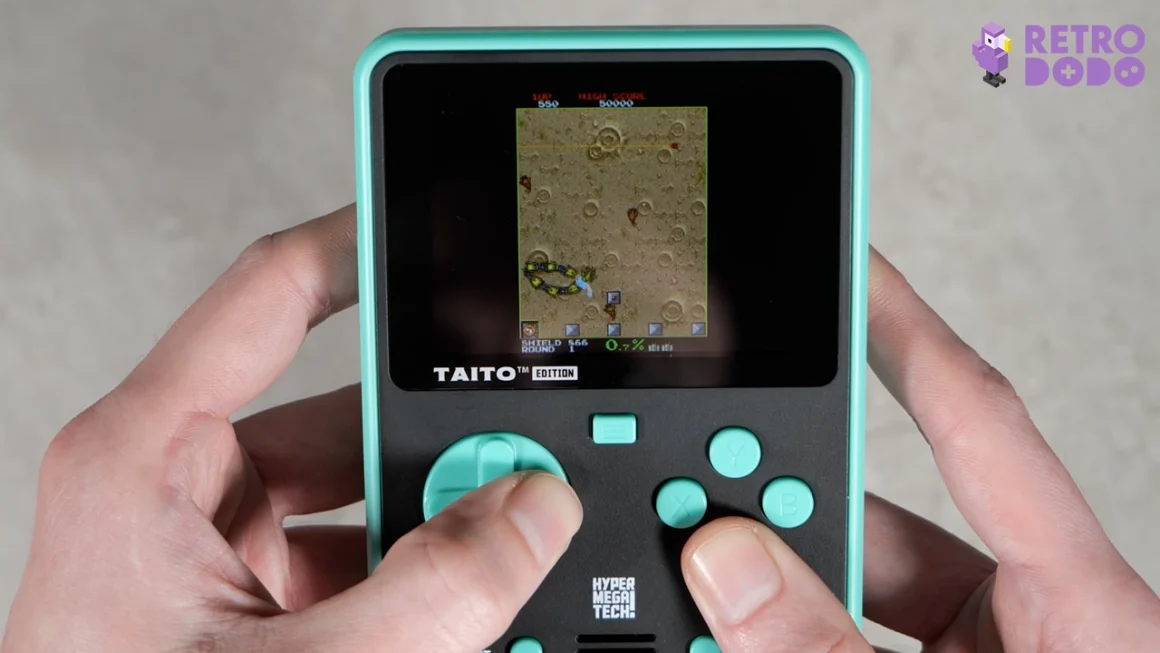
But come on now, there’s gotta be something more wrong with these right? I’ve been singing the Super Pocket’s praises for a while so lets get into some negatives!
Although I do actually think the games on offer on both of the devices are pretty good, I do have to question certain inclusions.
For example on the Taito one, you’ve got Operation Wolf, a light gun game which is obviously supposed to be played with… well… a light gun.
Why was this even included when it completely defeats the purpose of the game when you’re just moving a cursor around on the screen?
Then you’ve got games like Volified on the Taito device and 1942 on the Capcom device which have a thinner vertical aspect ratio and considering the screen is already pretty small, these games make the screen look even smaller which isn’t exactly ideal.
You’d think that some of these games could have been swapped out for maybe some slightly newer games to demonstrate what these devices are capable of a bit more. I get that the focus of this particular run is on arcade games, but this almost seems like a shame to be limited in this way when there’s so much more that could have been showcased.
Is There An Option For Multiplayer?
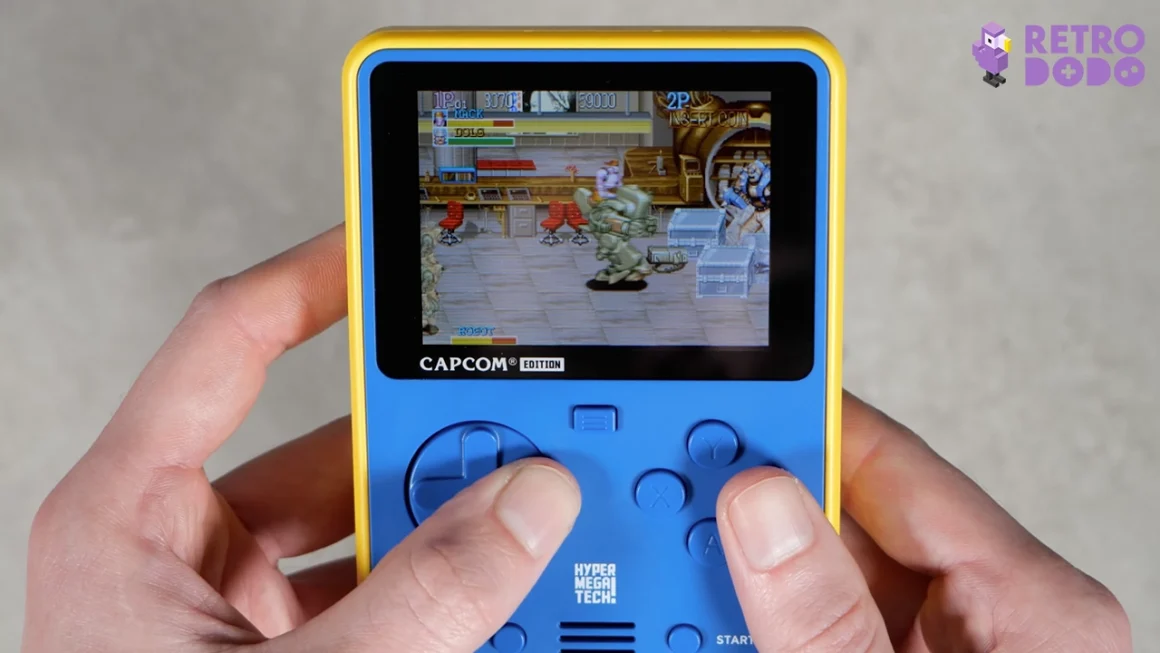
Something else which feels maybe a little bit strange is that a lot of these games feature a fairly heavy emphasis on multiplayer, games like Bubble Bobble are way more fun in co-op and Street Fighter II: Hyper Fighting is known for it’s competitive multiplayer.
But the Super Pocket has absolutely no multiplayer functionality at all. I was thinking that maybe it could connect wirelessly to other nearby devices or maybe even have some sort of link cable which would have been an awesome throwback to the Game Boy, but no.
You just straight up can’t do any form of multiplayer here which just feels a bit weird.
There’s also no online functionality either, which in a way is refreshing because you know you’re getting a finished product that doesn’t rely on updates to fix firmware problems or emulation issues. But in another way this is a shame because it means there’s no online leaderboards or trial versions of games to download or anything like that.
Our Verdict On The Super Pocket
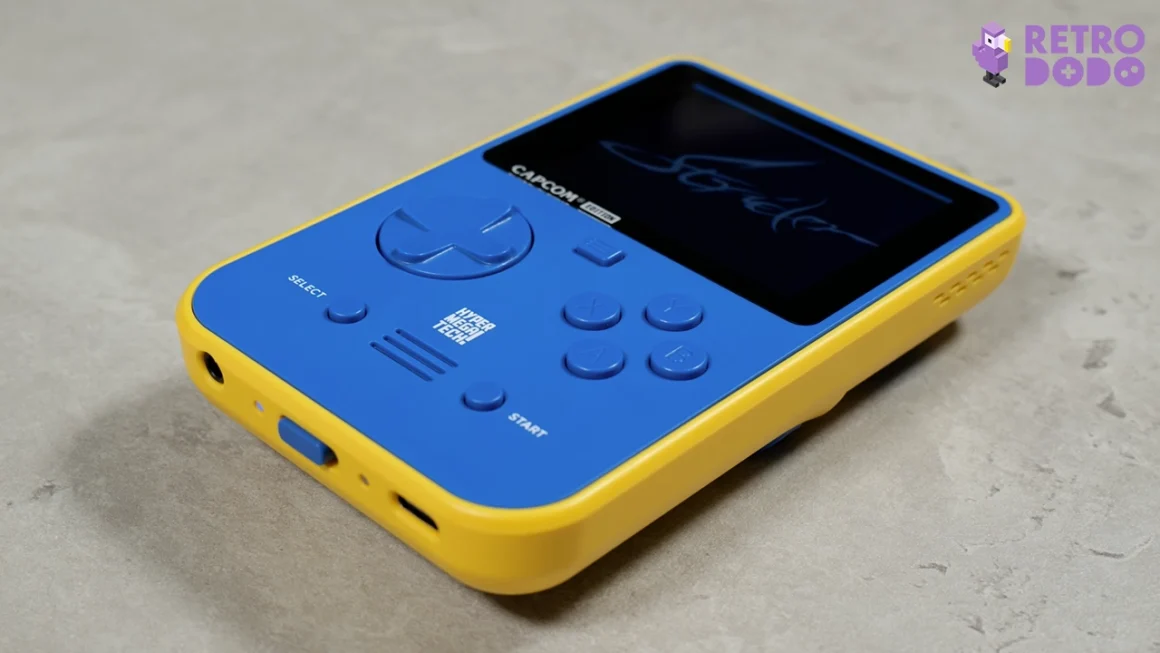
This all brings me to this sort of weird conclusion. I really, really like the Super Pocket. I think the idea is genuinely really good and I’m blown away by the quality considering the fairly low price tag.
This is an absolutely amazing way of introducing someone to retro gaming or retro emulation devices. Every element of it from the sleek design and the minimal UI has been crafted so well.
The main issue for me is that despite it’s functionality with Evercade cartridges being a massive strength when compared to other devices, it does cause this slight conundrum where it’s inadvertently competing with the other Evercade systems.
Considering that Evercade already have a portable console with the Evercade EXP and it’s technically better than the Super Pocket in almost every way, featuring a higher resolution screen, HDMI output, being widescreen, featuring a TATE mode to play vertical games by turning the device sideways and even having Wi-Fi functionality, it’s difficult to justify buying a Super Pocket over an EXP.
The Main Pros
The obvious advantage of getting a Super Pocket over an EXP is the difference in price. On Amazon the EXP is going for £130 in the UK and $130 in the US which is more than twice as expensive as a Super Pocket, so I suppose they’re sort of aimed at a different market purely based on that.
You could theoretically get a Super Pocket as a Christmas present without breaking the bank too much whereas the Evercade EXP is probably a more major purchase.
The Super Pocket’s simplicity with it’s design and UI also make it more suited to complete novices to the retro scene or maybe even kids looking to experience gaming history, so there definitely are situations where the Super Pocket has an advantage over the EXP but I would say that they’re probably quite niche situations.
Areas Where The Super Pocket Might Struggle
I think this comparison to the other Evercade consoles is where the Super Pocket is going to struggle, but there is a chance that they could market it cleverly to make it more attractive.
For example if there was an Evercade cartridge filled with Game Boy games, this would obviously be more suited to the Super Pocket than anything Evercade related simply because of the Super Pocket’s form factor.
On the other hand though, any games on the Evercade that have a widescreen resolution might look weird on the Super Pocket due to it’s 4:3 screen and I’m assuming these would be letter-boxed which again, makes the screen appear even smaller than it is and might even result in certain games being almost unplayable.
So, you’ll really have to think about what you’re wanting from a device like this and weigh up the positives and negatives yourself.
It almost works better when you view it less as a competitor to the Evercade systems and more as a companion. For example, if you already have an Evercade EXP, I can see the Super Pocket being more attractive because it’s smaller and more portable and you’ll already have loads of cartridges to use with it.
You’d be able to decide which games are more suited to a smaller vertical device and which require that bigger screen that the EXP has.
Final Thoughts
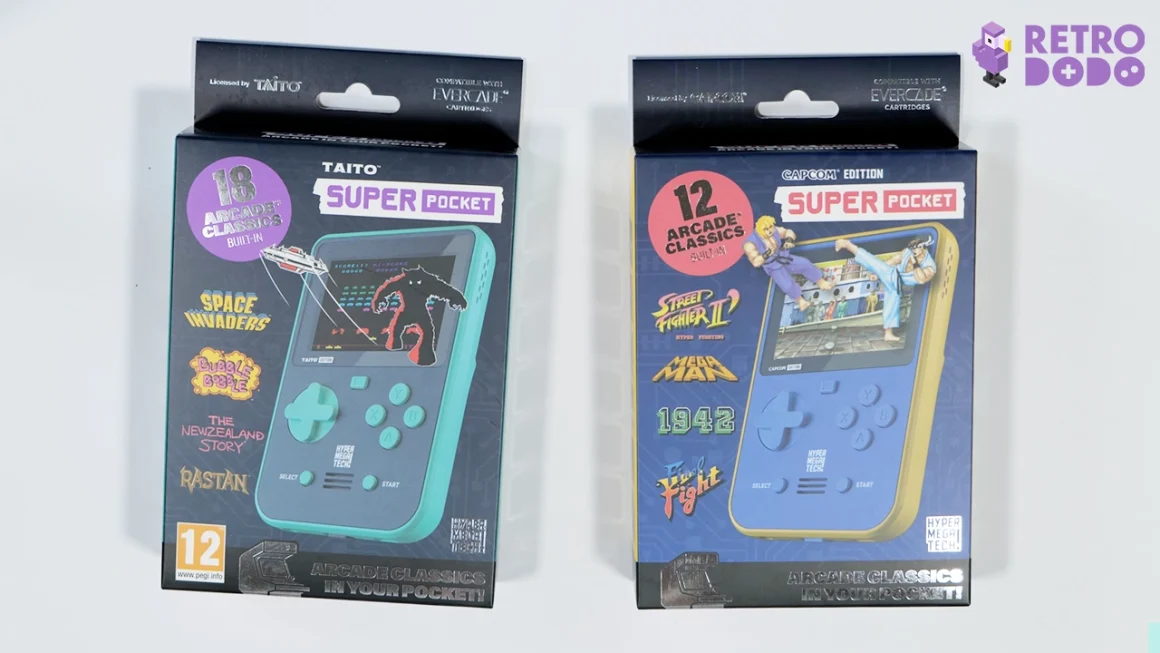
But those are my thoughts on the Super Pocket! It’s an awesome little device and I love that it’s making handheld retro gaming accessible again through the use of a minimal and intuitive UI and cartridge based games.
I think the main problem is that it’s just maybe positioned in a slightly difficult place in the market and could have probably done with a more diverse set of pre-installed games to really push it into the spotlight.
It’s difficult to complain to much when the quality is this high and the price is so competitive.
This seriously would make for an amazing gift for anybody you know who’s into retro games and is a particularly good choice for anyone new to the handheld scene too.
It’s also a good gateway into the wider Evercade line of systems. If you think someone might be interested in Evercade but aren’t 100% sure, you could get them a Super Pocket first and if they enjoy that and start collecting cartridges for it, you could get one of the other systems later down the line.

